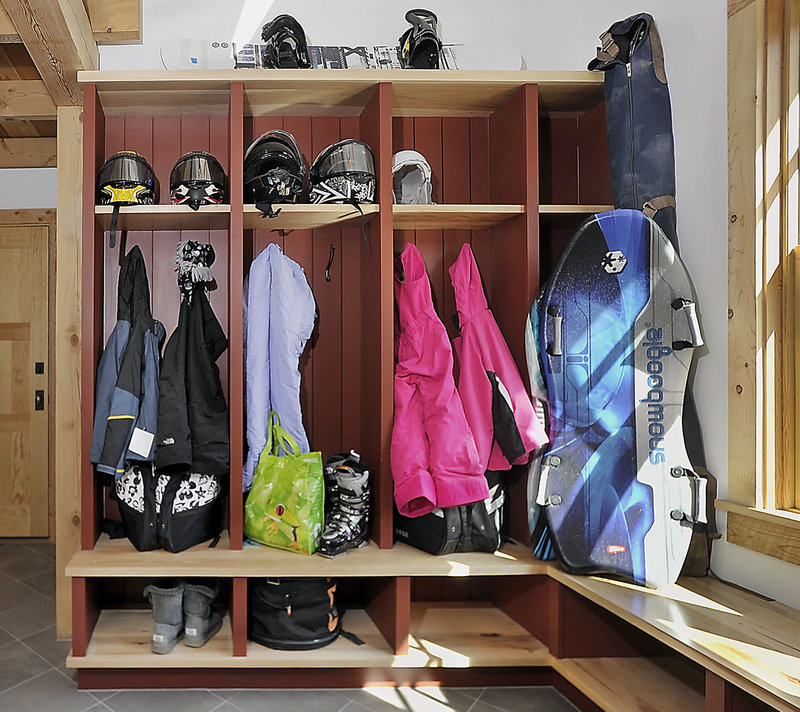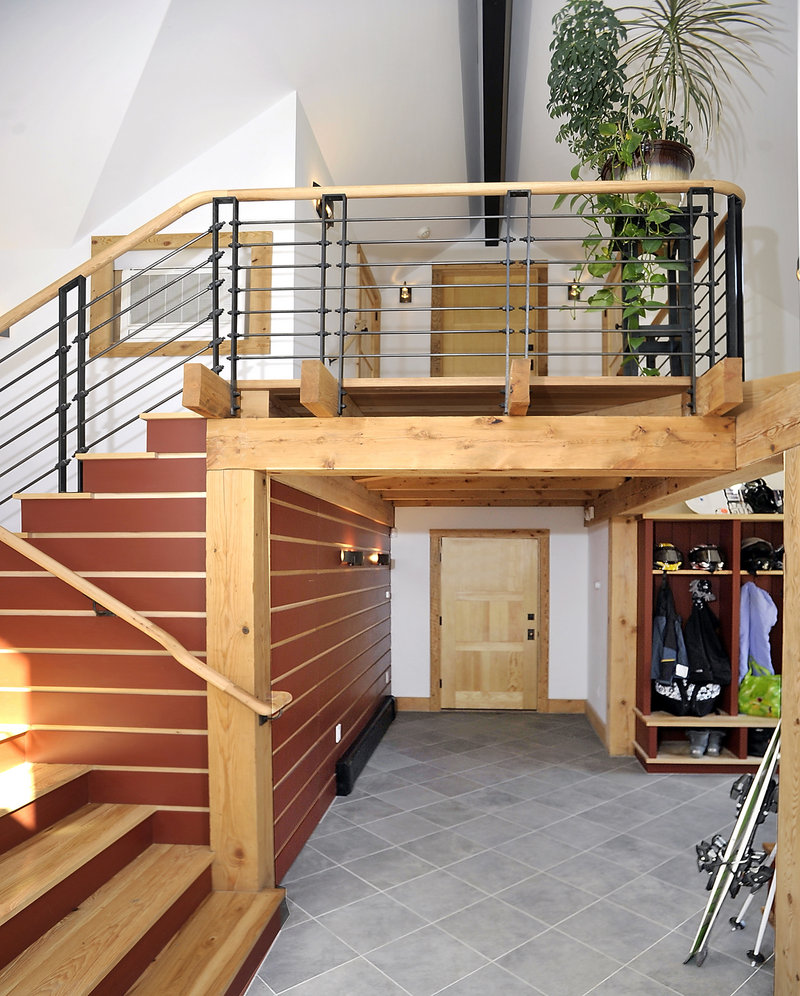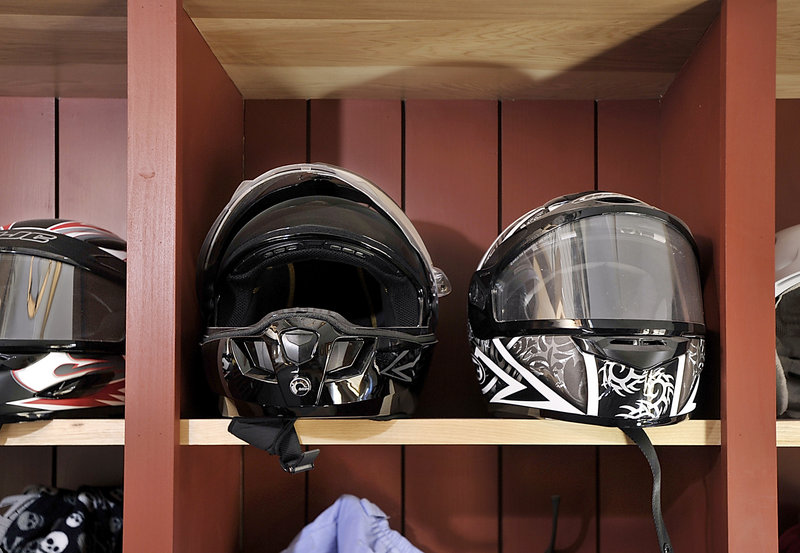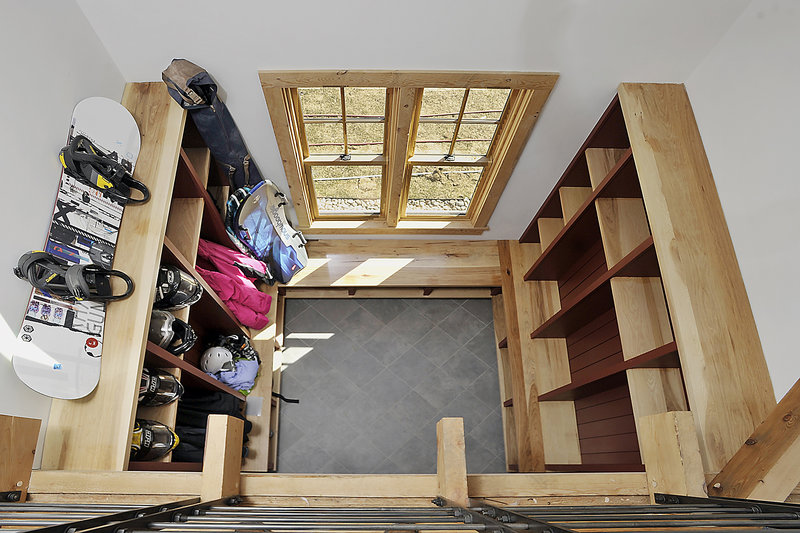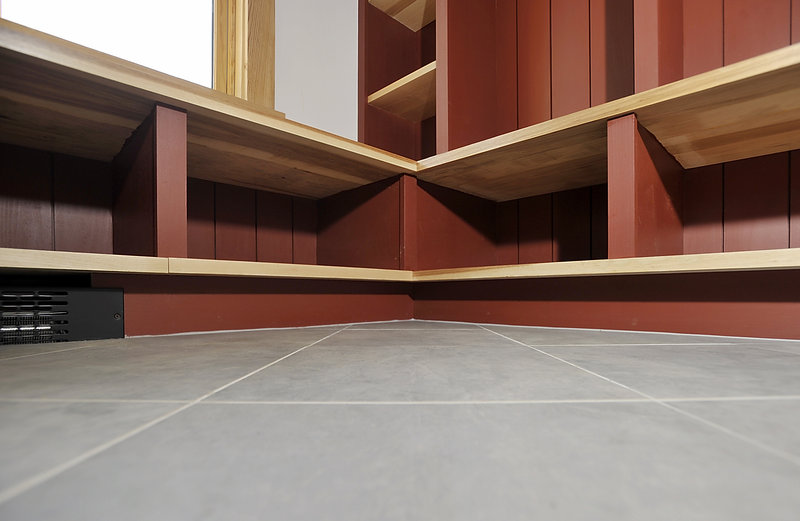If you haven’t thought much about a mudroom, maybe now’s a good time.
It is mud season, after all. And there are few places that have a better mud season than Maine.
Of course, a mudroom is important all year long. A mudroom is a buffer between your home and the outside world, a place to kick the snow off your boots, shake the sand out of your beach sandals and dry out your wet raincoat.
So in Maine, where the weather changes drastically, it’s really important to have a place to shake off the mud, the sand, the snow and the water before retiring to the comfort of your home.
What exactly makes a great mudroom?
The first thing — and this may seem obvious — is to have one entrance leading in from the outside and a separate passageway into the house. You’d be surprised how many houses have a little room for coats and shoes that is not connected by a door to the outside world.
Jamie Salomon, an architectural photographer, had just such a mudroom in his Portland home before having it renovated a few years ago by Dan Kolbert of Kolbert Building in Portland.
“We really wanted storage for each of us (two adults, two children) — separate little cubbies for each of us, for our personal items — so if we put something away, everybody would know where it was,” said Salomon.
Besides storage cubbies, Salomon’s mudroom has a dark ceramic tile floor that looks like slate. Salomon likes it because it hides the dirt and is relatively easy to clean.
Adding storage and a durable floor are things you can do to an existing space. Another small thing you can do is just make sure your coat hooks are hung over the heating source so wet coats will dry out. Salomon has this feature in his mudroom too.
Kolbert, the builder who renovated Salomon’s mudroom, says the first thing people should consider when building or outfitting a mudroom is that it’s probably not feasible to have enough storage for four seasons’ worth of stuff in one average-sized mudroom.
He also says people shouldn’t “overdo it on cubbies” and other defined storage units.
“Divisions are nice, but it’s possible to chop (the mudroom) up into too many small pieces, which restricts its usefulness. Things like baskets and containers within a larger space may give you more flexibility,” said Kolbert.
He also suggests thinking about how your wet clothes can dry out in your mudroom.
If you’re building a new house, you have a little more wiggle room in terms of what you might want in your mudroom.
Such was the case for Christopher Michael Martell when he had his Scarborough summer and vacation home designed by Caleb Johnson Architects + Builders of Biddeford.
The home is a large mountain ranch being built with Craftsman-style touches. The mudroom was specifically designed to be a “comfortable” place for the family to transition from the outdoor sports they love to the interior of the home. It’s a place to kick off muddy boots and shake the snow off ski parkas.
Martell describes it as the family’s “private” ski lodge. He wanted the feeling to be “organic,” with natural materials and rich color and textures used for the storage cabinets, benches and other features.
For a few more ideas on how to outfit a mudroom, here are some suggestions for Maine-based builders and home organizers:
• SHOE CARE — If you have small children, you could use plastic drawers that are easily wiped out, says Bonnie Joy Dewkett of Freeport, a certified professional organizer whose business is called The Joyful Organizer.
For larger shoes, try using baskets inside of a larger cubby system. And, by adding rocks to any old plastic boot tray, you’ll create a place that allows wet shoes to drain and dry.
• HIT THE FLOOR — Clean and durable flooring is of “paramount importance” to a good, functional mudroom, says Rusty Partridge of Black Dog Timberworks in Hartford. Slate tiles or concrete would be good, and would allow you to install under-floor heating mats, Partridge said.
Bruce Leland of Long Cove Builders in Harpswell suggests looking at high-pressure laminate flooring too, as many laminates today are made to look like tile or stone.
• HEAT THINGS UP — Mudrooms are often under-heated, said Partridge, so wet coats and boots won’t dry. Consider a wall-mounted radiant heater to add some warmth. Your mudroom floor might stay dryer and cleaner if you have a place to stomp boots outside.
Consider adding a little roof overhang, over your mudroom door, to create a place to kick off snow and mud a little before entering the mudroom, Partridge says.
Leland says that if possible, make your mudroom act as an airlock with a door between it and the rest of the house, which will help lower energy costs in the rest of the house.
• GADGETS GALORE — If you shop around, you’ll see lots of gadgets that might help the style and function of your mudroom, including benches with storage underneath and all sorts of storage items.
One very interesting techno mudroom gadget, suggested by professional organizer Sandy Imondi of Brewer, is a boot dryer from L.L. Bean. One large stationary electric boot dryer is listed on the company’s website as selling for $49.95. You plop the boot on top of the dryer — which looks like a big metal pipe and uses “thermal convection heating” — and take it off when it’s dry.
• HOOK ME UP — Dawna Hall of Organize ME in Portland says you can never have too many hooks in your mudroom. Hooks keep things off the floor and allow you to easily find a wide array of things, from school bags and dog leashes to hats and sports equipment.
Some of these things might get buried in a cubby or a bin, but if they’re on a hook, they’re easier to see. Plus, you can hang hooks at different levels for different-sized members of your family.
And by the way, Hall recommends metal hooks, because they seem to be sturdier and more durable than wooden peg hooks.
Staff Writer Ray Routhier can be contacted at 791-6454 or at:
rrouthier@pressherald.com
Send questions/comments to the editors.


